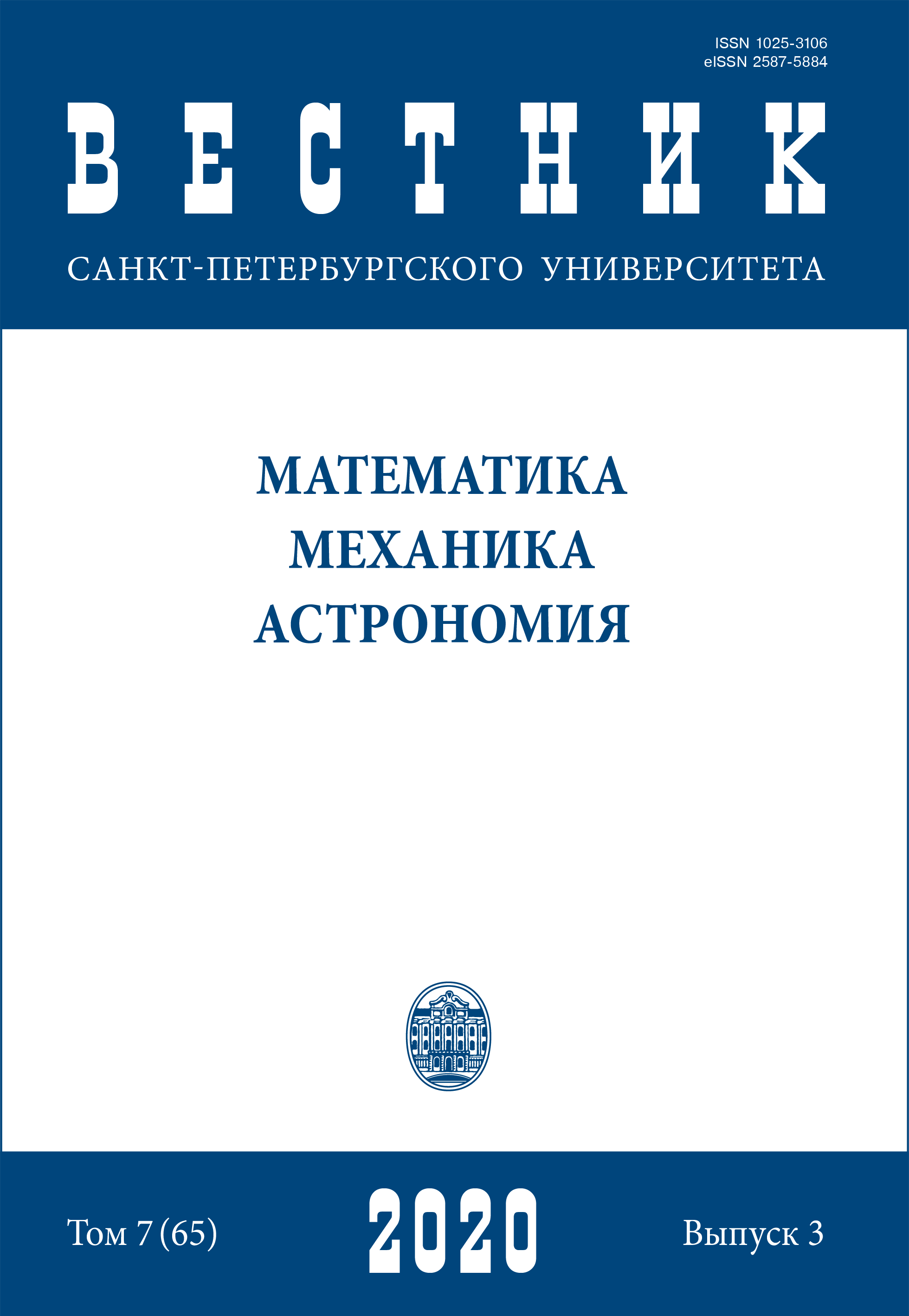Formulation of the fatigue fracture criterion of composite materials
DOI:
https://doi.org/10.21638/spbu01.2020.313Abstract
According to numerous studies of different types of composite materials was found that the main processes of fatigue fracture in these materials are caused by the accumulation of damage. The measure of damage is determined by various degradation processes of the material: the fibers fracture, delamination, destruction of the matrix, the joint destruction of the matrix and fibers, separation on the interface, re-inclusion. The sequence of these damages can be various up to full fracture of a material. Unlike metals, for which the formation and development of cracks are the main mechanisms that determine the durability of the material, for composite materials, these mechanisms are determined by the kinetics of the development of the damaged state until the final fracture. The cumulative damage accumulation curve is an increasing function of the time (number of loading cycles) until the moment of macro-fracture. In the general formulation of the kinetic equation for the damage parameter was considered in the works of Howard and Bokshitsky. According to these works, the damage of the system, in accordance with the conception of statistical physics, proceeds at a rate that depends on some external factors (mechanical, physical, chemical, etc.), as well as the value of the accumulated damage. Since that the real materials have a random structure, therefore, the continuity or damage parameter is a statistical index. This index can defined using a kinetic equation, the right part of which is given in the form of a power dependence on the value of the effective stress. The given conception was used in the works of Kachanov-Rabotnov and on its basis, the criterion of brittle fracture under hightemperature creep was formulated. In this paper, the damage conception is used to describe the damage processes of composite materials and the formulation of the fatigue strength criterion. The relative changes of the elasticity modulus in the process of cyclic loadings is considered as a continuity (damage) parameter. The critical value of damages is accepted as a fracture condition and on this basis the criterion of fatigue strength is formulated. The coefficients of the criterion are concretized and damage accumulation curves and fatigue curves are plotted. A good agreement between the theoretical damage and fatigue curves with the results of the corresponding experiments on the fatigue of carbon fiber plastics is observed.
Downloads
References
Литература
References
Downloads
Published
How to Cite
Issue
Section
License
Articles of "Vestnik of Saint Petersburg University. Mathematics. Mechanics. Astronomy" are open access distributed under the terms of the License Agreement with Saint Petersburg State University, which permits to the authors unrestricted distribution and self-archiving free of charge.




